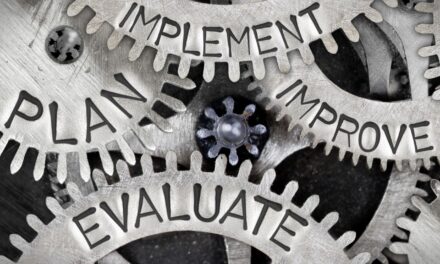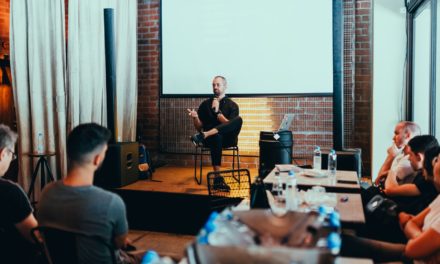Practical Ways to Combat Debilitating Hunger | By Richard Lackey
Conscientious pastors know that growing a church includes ministry to the poor. By prioritizing outreach to hungry people here and around the world, churches reflect the heart of Jesus.
Feeding the hungry is undoubtedly part of your church’s discipleship. In Matthew 25:35-37, Jesus parallels feeding the hungry to feeding himself and caring for those in need is at the heart of church outreach.
A long-time friend and church board advisor traveled around several western states to see what commonalities existed among the fastest growing churches.
I wasn’t surprised to hear that most of these churches were focused on building community through small groups, but I was a bit surprised to learn that almost without exception, new attendees, not just new members, were being asked to plug into some form of service.
After hearing this, it wasn’t startling to find that much of the rapid growth in my home church could be attributed to be the entire leadership team being committed to engaging with people where they are, to take their next step, and to step into service where they can.
The Problem
With the U.N. reporting that global hunger numbers rose to as many as 828 million in 2021, the world is facing unimaginable emergency levels of food insecurity. With current world affairs, it’s getting worse.
For instance, forecasts for famine in Africa are devastating. What do we do when sending aid seems to be an insubstantial solution?
The World Food Bank has a long-term plan that strives to put the success of the smallholder farms at the heart of it. Investor money creates an asset-based system that will advance emerging markets by strengthening agriculture value chains.
Simply put: the solution is to develop regional ecosystems that set up the small hold farmer for success for generations to come.
Why are so many hungry in 2022?
Let’s look at the greater Horn of Africa, which has millions facing acute food shortages brought on by drought over many years.
That ongoing drought, plus conflict and turmoil, has been accelerated with COVID-19 and the war in Ukraine.
The effects of war are far-reaching, with Ukraine only able to export 15-20% of the 6 million tons of wheat it would export monthly to Africa, the Middle East, Asia, and beyond, plus other factors like sanctions against Russia, which is a major exporter for fertilizer supplies.
The effect: the cost to farmers is spiking. Disrupted shipments of key inputs around the globe are pushing out small-hold farmers. They are among the most impoverished and food insecure.
Ending poverty and ending food scarcity require long-term solutions.
Transformative change means building sustainable food ecosystems. Then underdeveloped nations can rise to the challenge of feeding their growing population.
What is a sustainable food ecosystem?
The World Food Bank goes into regions that need help climbing out of poverty to build geographical ecosystems that connect small hold farmers with the tools, education, and financing to farm better.
A local supportive market for their goods gives them the keys to success and creates lasting effects.
Steps to Success
The World Food Bank creates an integrated value chain system. Here’s how:
⦁ We educate farmers on good agricultural practices.
With healthier soils, hybrid seeds, crop rotation, and improved post-harvest techniques, the quantity and quality of the food they grow significantly improves.
This is done through direct hands-on training, entertaining broadcast TV and radio educational programs demonstrating the improved inputs and techniques and their impact, and continuing education for agronomists and government extension workers.
⦁ We make high-quality inputs available.
World Food Bank partners with high-quality input providers to ensure that farmers in our communities have access to safe seed, organic pesticides, and more that enhance the yield and ecosystem.
⦁ We guarantee a market for them, which significantly de-risks the farmers.
We work to stabilize markets by establishing a profitable price floor that we offer farmers who produce crops that meet our quality requirements and establishing a profitable price ceiling for food processing businesses that enables them to operate all year long.
⦁ We enable financial institutions to provide loans and partnering microfinance institutions to ensure affordable financial services are available.
The rural poor live in a constant state of no savings. Every bit of their income goes toward survival.
Banks rarely lend to smallholder farmers due to the high risk of default, which means they don’t have the high-quality inputs to improve their yields.
The World Food Bank Difference
The World Food Bank secures institutional quantities of dried foods and grains, like corn, soy, wheat, sorghum, and rice. These commodities are stored in air-tight containers, extending their shelf-life so they can be deployed to strategic locations as needed.
Furthermore, we purchase the commodities at guaranteed minimums to incentivize small farmers as they determine how to use inputs and manage their crops.
We sell the commodities in local markets when supply is limited.
We also provide direct relief to victims of humanitarian crises when resources are scarce.
For instance, in the wake of the flooding in Kentucky, the World Food Bank stepped up to assist by shipping 80,000 meals from its food storage facility in Utah.
How Your Church Can Get Involved
The concerns around food security have not been as stark for decades as they are now.
The season of abundance that grew from centralized mass production may have brought with it a fragility we did not expect. The just-in-time efficiency theories on logistics don’t carry the strength or dynamic capacity for dealing with disruption that can be found in a well-prepared community of believers.
As the world comes to realize the value of decentralized food systems, there is a need for the body of Christ to lead the way in serving those in need.
Here are a few ways we can do that.
⦁ Build a Food Secure Community.
Let’s begin locally by connecting with county leaders who oversee the USDA Food and Nutrition Services (FNS) that supports services to school children, low-income families, Indian reservations, and the elderly.
While most of these agencies won’t typically share names and addresses of people in need, they can provide information on the number of people in need by school, nursing home, and neighborhood along with many of the specific needs of each group.
We have found that the more you personalize the effort, the more impact there is for both the server and the recipient.
Kids may be the most vulnerable as the damage they suffer from under-nutrition creates challenges for a lifetime. Weekends are the worst for school kids without enough food at home. Many may not have anything of real substance until they get back to school on Monday.
Consider organizing teams to put together weekend “go bags” for kids at a school or schools in need.
Fruits that don’t bruise easily, snacks packed with protein or vitamins and minerals, and pre-packaged meat and cheese snacks are the most efficient.
Partner with a local school to drop these weekend snack-bags off on Fridays.
⦁ Create the updated “3.0” Version of a Food Bank.
For those who don’t closely follow the trends in technology, here is a quick summary of what 3.0 is, how it applies to food security, and why it may be the next big thing in community service.
The term itself is reflective of the evolution of the internet.
Web 1.0 describes the early internet when it was a place to go as a repository of information from sources shared all over the world.
Web 2.0 saw the advent of interactive systems where we can communicate directly in community settings, create content, and get feedback or even play games.
The drawback with Web 2.0 is that all of our personal information, communications, and opinions are captured by a small group of technology companies who control what we see and sell our data.
The Web 3.0 “movement” is intended to give people direct ownership and control over their information, the content they create, and any other data they may create in their daily web life. People can elect to share more information in exchange for a portion of the revenues generated by advertisers, and they can more accurately direct what information is shared and with whom.
Food security is going through its own Food 3.0 movement.
Organizations are popping up to help churches and families to create their own green houses and food gardens.
Small groups are going back to days of old where they gather several times a year to do drying, canning, and preserving for their own households and as a way to create higher quality food for times when their community is in need.
There is something empowering about learning how to grow a garden, harvest your own food, and store food for the winter and as a hedge against any rough times that may come our way. These are also great tools for building community in a time when we need community more than ever.
We are advocates for strategic advanced planning. This can take many forms, home food gardens, church food gardens, food pantries, or partnering with an organization like the World Food Bank Foundation that can produce meals and fortified snacks at a fraction of the cost to get the most impact for each dollar spent.
⦁ Invest. Then, partner with World Food Bank.
Your church’s partnership can be part of creating an ecosystem that can carry on that empowers the farmer to develop their own production, with a robust ecosystem that can weather the challenges of nature and politics.
Consider partnering with The World Food Bank to make real and long-term change that is so desperately needed.
Join us in eradicating hunger. For good.
Visit www.worldfoodbank.global to learn how your church can help hungry people.






